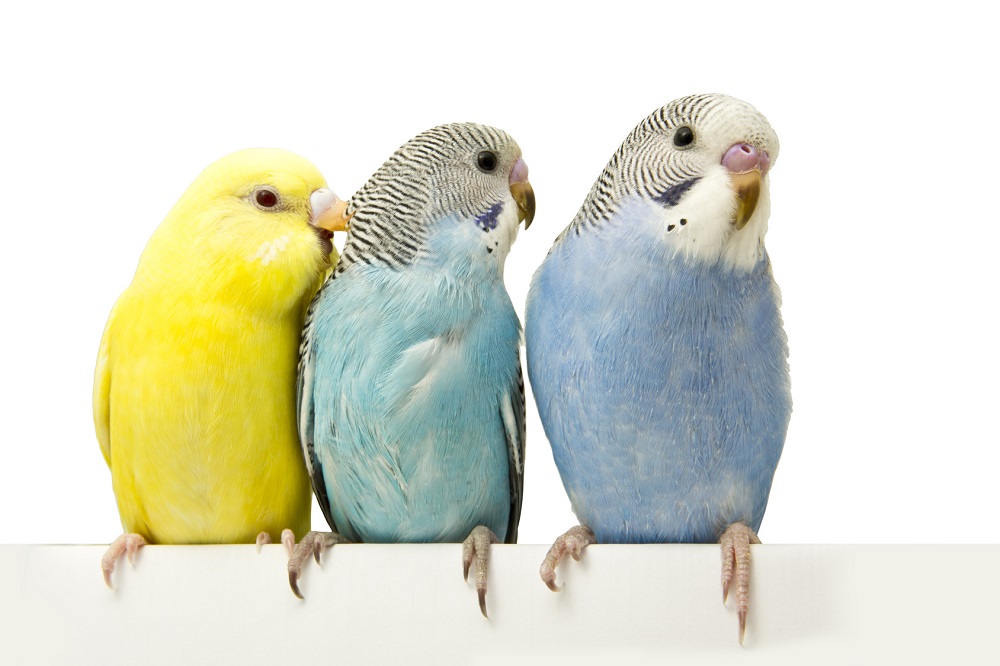Pet Bird Information
Whether you own a lorikeet or a lovebird, a cockatoo or a cockatiel, this page is designed to give you a run down on simple tips to give your feathered friend a long and happy life.
Housing
It is important to remember that birds are extremely intelligent creatures. This means that if your pet lives in a relatively small cage it will require lots of toys and stimulation.
Cages should be made with no sharp edges. Wash galvanized steel cages in vinegar solution to remove very toxic zinc and lead used to stop corrosion. Second hand cages that have weathered outside for a time are also a safe alternative.
Be careful that your bird does not chew on lead (lead paint, solder, weights used in blinds etc) as this is a common cause of heavy metal poisoning especially in parrots and cockatoos. Various sized perches and natural branches should be used to allow the bird to exercise its feet. The perches, as well as the cage require regular cleaning as soiled perches are a common source of infection for birds. Birds also like to bath regularly so access to an adequate source of bathing water is suggested.
Use only good quality food and water bowls that have no rough edges or solder that the bird can pick at and ingest.
Nutrition
Dry seed diets have traditionally formed the basis of most pet bird diets. Recent developments in avian nutrition have found that all seed diets have many shortfalls. Seeds often have deficiency in many vitamins and minerals, they have a high fat content (50% in sunflower and safflower seeds) which can lead to obesity and they are often infested with insects, dust and other toxic compounds.
Bird diets should be 50-70% fresh vegetables, fruits and nuts. This should include veggies such as red capsicum, and broccoli, fruit such as mango and cherries, walnuts and almonds and Australian native plants such as gum nuts, grevillia and bottle brush. The other part of the diet should be a commercial pelleted food i.e. not seeds.
Birds should be fed twice daily and only as much as will be completely eaten in 1-2 hours – this reduces selective consumption, wastage and overeating.
Wing Clipping
Clipping the wings of your pet bird (not aviary birds) is a good way to prevent escape and injury. This should be done by a trained person, such as one of our vets, as improper trimming can actually be dangerous to the bird. The aim of trimming is to allow the bird to fly down at a 45 degree angle and land without crashing with his/her beak and sternum (breastbone). Proper trimming of both wings will also prevent the circling erratic flight caused by the trimming of one wing. The number of feathers removed will depend on the type and age of your bird.
Worming
This should be done at least twice a year, especially if your bird has contact with wild birds that may “visit” the outside cage/aviary. Worming is best done with a commercial bird wormer which is added to the drinking water for a 24 hrs period. We stock bird wormers at both our hospitals. All wet foods (such as fruit) are removed before this worming so that the bird is thirsty and drinks the medicated water. Very fussy birds and birds such as budgies, which can go for weeks without drinking even on a seed diet, may be wormed with a crop needle where medication is “forced” into the gut with a special instrument.
Behaviour
Birds are highly social flock animals so companionship is important – from other birds or humans. Getting a friend for your bird may mean that he/she bonds to the companion bird and becomes less ‘tame’ towards you.
Behavioral problems in aviary birds are typically associated with the effect of captivity on instinctive flock behaviors. Behavioral problems commonly seen include screaming, feather plucking, sexual frustration and boredom. Simple things can be done to help alleviate these problems such as environmental enrichment, improvement of the diet, basic obedience training and elimination of adverse stimuli i.e. vermin/other birds.




